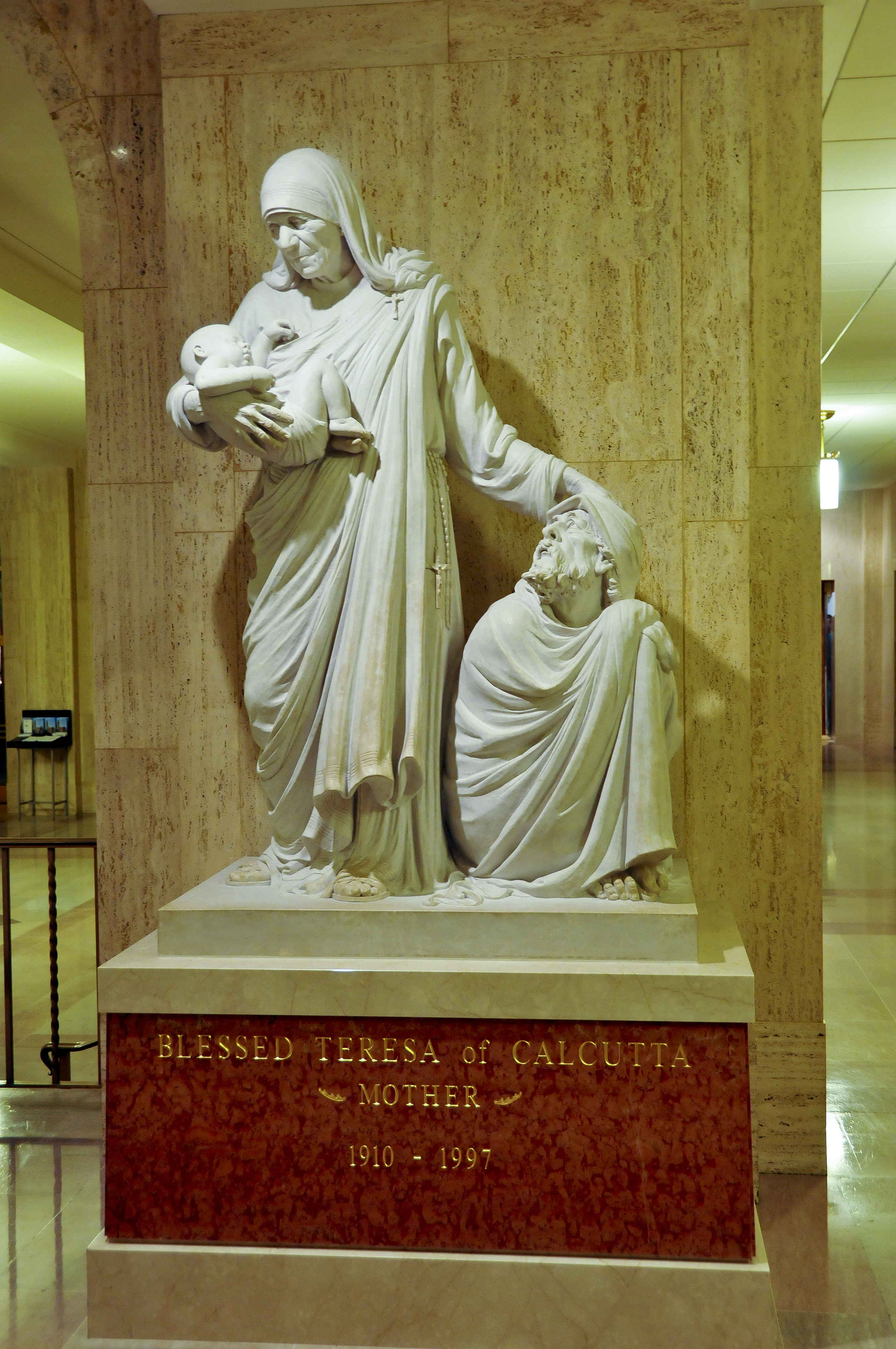On Sunday, Mother Teresa was canonized. The one time I saw her in action confirmed my belief that she was a saint. To tell this story though, I have to tell another story first.
When I was in graduate school, a friend and I won a free trip to Puerto Rico. We visited old town and saw the fort and ate the wonderful food. One day, we decided we would visit the U. S. National Park on the island, the only one in the whole national park system that was a tropical rain forest. We were hiking along a narrow path cut into a steep embankment. About half way through the walk, another hiker came walking towards us. He was kind, smiled at us, and stepped to the side to let us pass. When he did so however, he lost his footing and slipped off the side, disappearing from our view in an instant. My friend and I were frozen, stunned. It took us several moments to get our wits about us and recover. Eventually, we went over to the side to see what happened and saw the man just a few feet down. He was perfectly fine. We helped him up, even if it had taken us some time to get over our shock.
This was so different from the time I saw Mother Teresa. When I was in graduate school at the Catholic University of America, word got out that Mother Teresa was going to attend a mass where some of her sisters were making final vows. I went to the mass, and, as expected, it was packed. I was in the very back and could not see her. During the procession at the beginning of mass however, the lector who was carrying the gospels tripped and fell. Another shock. As I did in Puerto Rico, I stood there–along with everyone else–stunned by what happened, staring at the fallen person. While we were all in our two or three seconds of immobile surprise, Mother Teresa was out in the aisle helping the person up. She was already back in her seats before many of us — or maybe it was just me — even had the thought, “I should go help him up.”
For me, this has always perfectly reflected what made Mother Teresa a saint. I had heard about her work growing up. In college, when I started to take my faith more seriously, I was heavily influenced by Malcolm Muggeridge’s Something Beautiful for God. Throughout my academic career, I marveled at how many people adopted St. Thérèse of Lisieux’s “little way”, including Mother Teresa. In this incident though, I saw a saint in action. It was not that she helped a person up. I think anyone in the church at that time would have helped. It was that she was so ready to help, so habituated to helping, that it came to her as naturally as breathing comes to the rest of us. While we were still figuring out what happened and what to do, she was already doing it.
This is what moral theologians call virtue. It is not just doing the good but rather the habit of doing good. It is a habit that takes over your life, becomes second nature to you, so that you can act immediately, without hesitation, and with perfect freedom to do what is needed and good. Unlike so many of us who labor to do what is right and good, Mother Teresa did it as if it was just the easiest and most natural thing to do. In other words, she is a saint not just because she did good work, loving the poorest of the poor, but because love of God and stranger animated her whole life and being.




